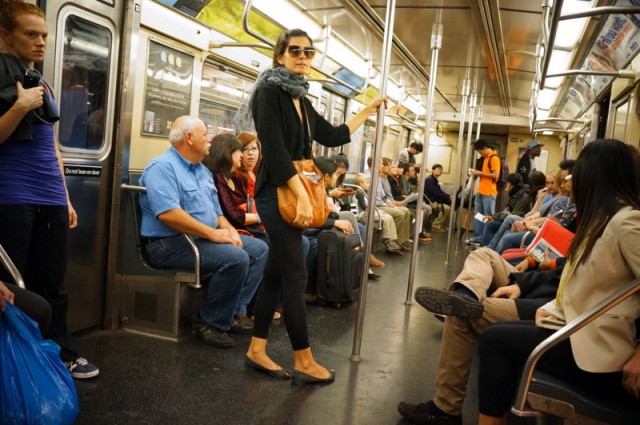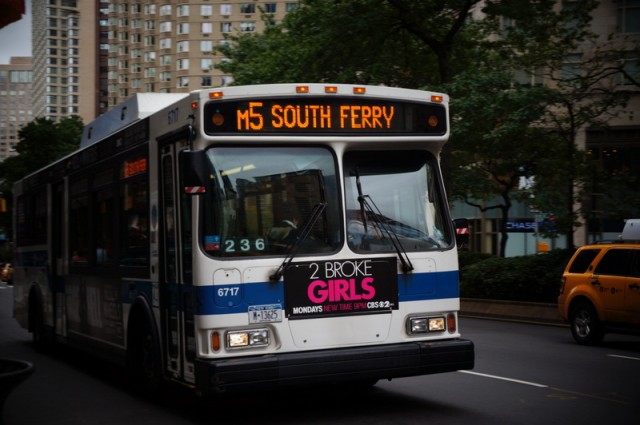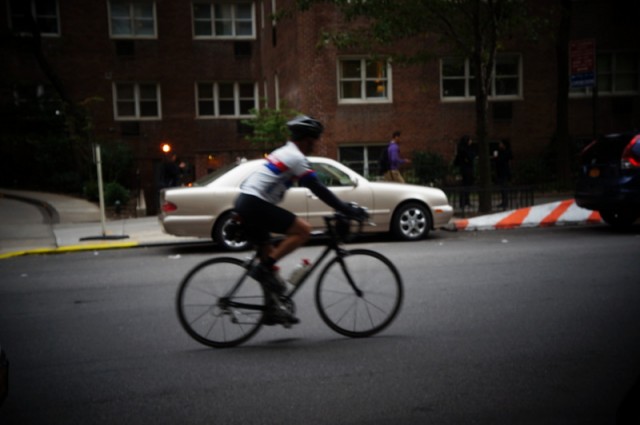A developed country is not a place where the poor have cars. It’s where the rich use public transport
— paraphrased from Enrique Penalosa, former Mayor of Bogotá, Colombia
The quote* above has been gaining traction recently, and with good reason. Developed countries are focusing more on sustainability, whereas the use of public transportation brings environmental and economic benefits by enhancing the energy efficiency. As an international financial center, New York City is distinguished by its low ownership of personal automobiles and the highest rate of public transportation use in the United States. It is the only city in which over half of all households do not own a car, and in Manhattan this figure even reaches 75%. In his book Green Metropolis, David Owen claims, “The average Manhattanite consumes gasoline at a rate that the country as a whole hasn’t matched since the mid-1920s.” Arguably, New York City is the greenest community in the States. A large part of this advantage comes from its complex public transportation network, including the largest subway system in the world, as measured by stations and track.
For those new to New York, it is fairly easy to navigate around the city with its grid structure.
Here’s a short guide to public transit in New York. If you want to experience most, walk; if you want to see most street scenery, take the bus; if you want to feel local, ride the subway.
1. Subway
It is the easiest and fastest way to get around the city. It is inexpensive, environmentally friendly, and a great way to see sites throughout the five boroughs. It is one of the only two public mass transits in the world that operates 24 hours a day, seven days a week. There are 24 lines in total and subway stations on the same line are about 8-10 blocks apart.
The New York Subway has around 150 years of history, so there are always construction projects and repair work; trains might change route or temporarily stop running especially on weekends and late nights. A free subway map can be obtained from booth attendants in the station or download it from the MTA website. You can use the trip planner there to customize your routes. Smart phone Apps like New York Subway Map and Roadify are also very helpful when planning your trip.
2. Bus
Taking a bus is a very nice scenic way to experience the city if you have time. It helps to reach destinations that are not convenient to subway stations. Bus stops are generally spaced every other block on avenue routes and every block on cross-street routes. Late at night, from 11pm to 5am, bus drivers will stop wherever you ask them to—as long as they feel it’s safe. All city buses accept MetroCards and exact coin change. A single ride costs $2.50 on a local bus and $5.50 on an express bus, and will take you any distance until the end of the route.
It is not difficult to understand bus route names: the letters at the front denote the borough — M for Manhattan, B for Brooklyn, Q for Queens, Bx for Bronx and S for Staten Island. For buses that go through different boroughs, for example, from Brooklyn to Manhattan, the route is expressed BxM. If it starts with an X, it means it is an express bus. The number at the back normally represents the street or avenue along the route.
For example, M1, M5, M7 are those that run along 1st Avenue, 5th Avenue and 7th Avenue; M28, M75 are those that run along 28th street and 75th street — crosstown buses.
A growing number of buses are environmentally friendly hybrids.
3. Tram
To get an aerial view of the city, you can take the Roosevelt Island Tram with a swipe of a metro card, free transfer available to buses and subway. The Tramway is operated by the Roosevelt Island Operating Corp (RIOC), providing a shuttle from 59th Street and 2nd Avenue in Manhattan to Roosevelt Island, located in the East River between Manhattan and Queens. Travel time from Roosevelt Island to Manhattan is just under five minutes and each cable car has a capacity of 125 passengers. The tram started in the early 1900s, taking passengers halfway across the Queensboro Bridge to the island. Today, it provides direct service for more than 2 million riders seven days a week.
4. Ferry
New York City is known for its waterfront. There is an extensive system that stretches uptown, downtown and across the rivers to Staten Island, Brooklyn, Queens, the Bronx and New Jersey. Most ferries are very bike friendly.
Staten Island Ferry is the busiest ferry in United States, which annually carries over 19 million passengers on the 5.2 mile (8.4 km) run between St. George Ferry Terminal and South Ferry. Service is provided 24/7, and takes approximately 25 minutes each way. The ride gives great views of the Statue of Liberty, New York Harbor and Lower Manhattan. And, who doesn’t love free things?
NY Waterway operates commuter ferries between points in Manhattan and New Jersey, boat transportation to Yankee Stadium, and harbor and sightseeing cruises. The East River Ferry also provides a refreshing addition to public transportation in the City (and breathtaking skyline views), with regular service to seven locations across three boroughs.
New York Water Taxi is another popular aquatic shuttle. Hop-on and hop-off stops include Chelsea Piers, Fulton Ferry Landing and the South Street Seaport. The company also runs free one-way service from Lower Manhattan to Citi Field and Yankee Stadium on game days.
Additionally, there is year-round ferry service to Ellis Island and Liberty Island and seasonal service to Governor’s Island; Circle Line Downtown, and Circle Line Sightseeing operate tourist routes into the Upper New York Bay or around Manhattan.
Others
Biking gives an alternate view to the city. Cycling hotspots include Central, Riverside and Prospect parks, and bike paths along the Hudson and East rivers and many bridges. Governor’s Island also provides free bike rentals on Fridays. More information can be found here, and another lifestyle post in our site: Bike & Cookies.
Check also: Changing a city’s skin, changing a city’s mind
Photos: Jenny Kun





